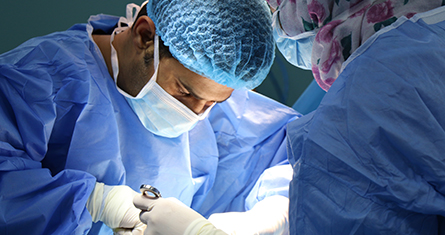The most common treatment for endometrial cancer is surgery and it should be performed by a surgeon with experience in gynecology and oncology.

Several types of surgery can be performed. A hysterectomy involves removal of the uterus and cervix and is the standard procedure for treating endometrial cancer. The uterus and cervix can be removed in one of three ways:
- Total abdominal hysterectomy: the uterus and cervix are taken out through an incision in the abdomen.
- Radical abdominal hysterectomy: in addition to the uterus and cervix, the tissue next to the uterus and cervix, as well as part of the upper vagina, are also removed.
- Minimally invasive hysterectomy(laparoscopic-assisted vaginal hysterectomy and robotic total laparoscopic hysterectomy): the uterus and cervix are taken out through the vagina with the assistance of a laparoscope or robotic device(a small tube-like viewing instrument)that is placed through the abdomen via a small incision.
For those patients with multiple medical problems and who are not healthy enough to undergo an extensive surgical procedure, a vaginal hysterectomy can be performed. In most cases, both ovaries and both fallopian tubes must also be removed. This procedure is called a bilateral salpingo-oophorectomy. Lymph nodes in the abdomen and pelvis may also be taken out to see whether they contain cancer.
Side Effects of Surgery
Some discomfort is common after surgery. It often can be controlled with medicine. Tell your treatment team if you are experiencing any pain. Other possible side effects are:
- Nausea and vomiting
- Infection, fever
- Wound problems
- Fullness due to fluid in the abdomen
- Shortness of breath due to fluid around the lungs
- Anemia
- Swelling cause by lymphedema, usually in the legs
- Blood clots
- Difficulty urinating or constipation
- Shortening of the vagina